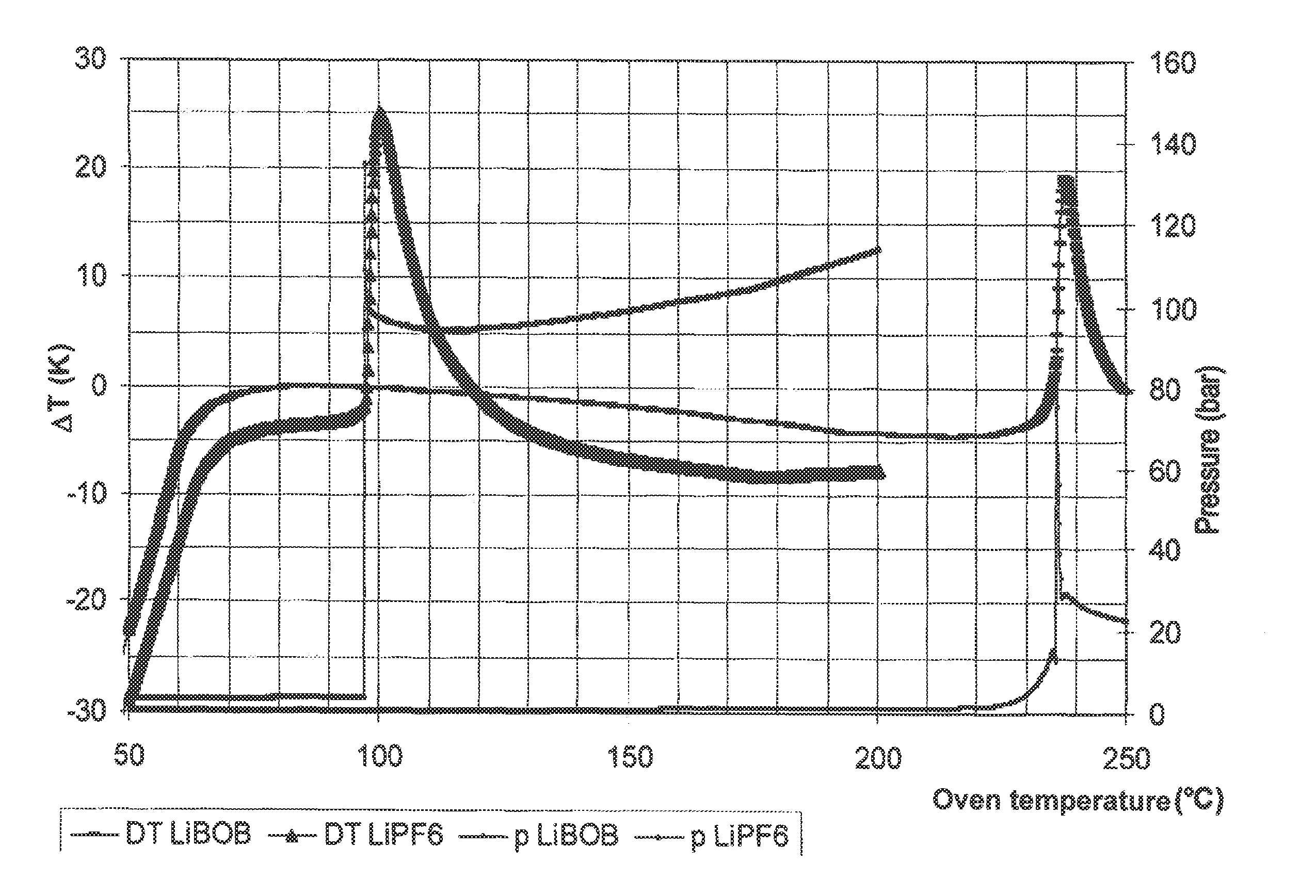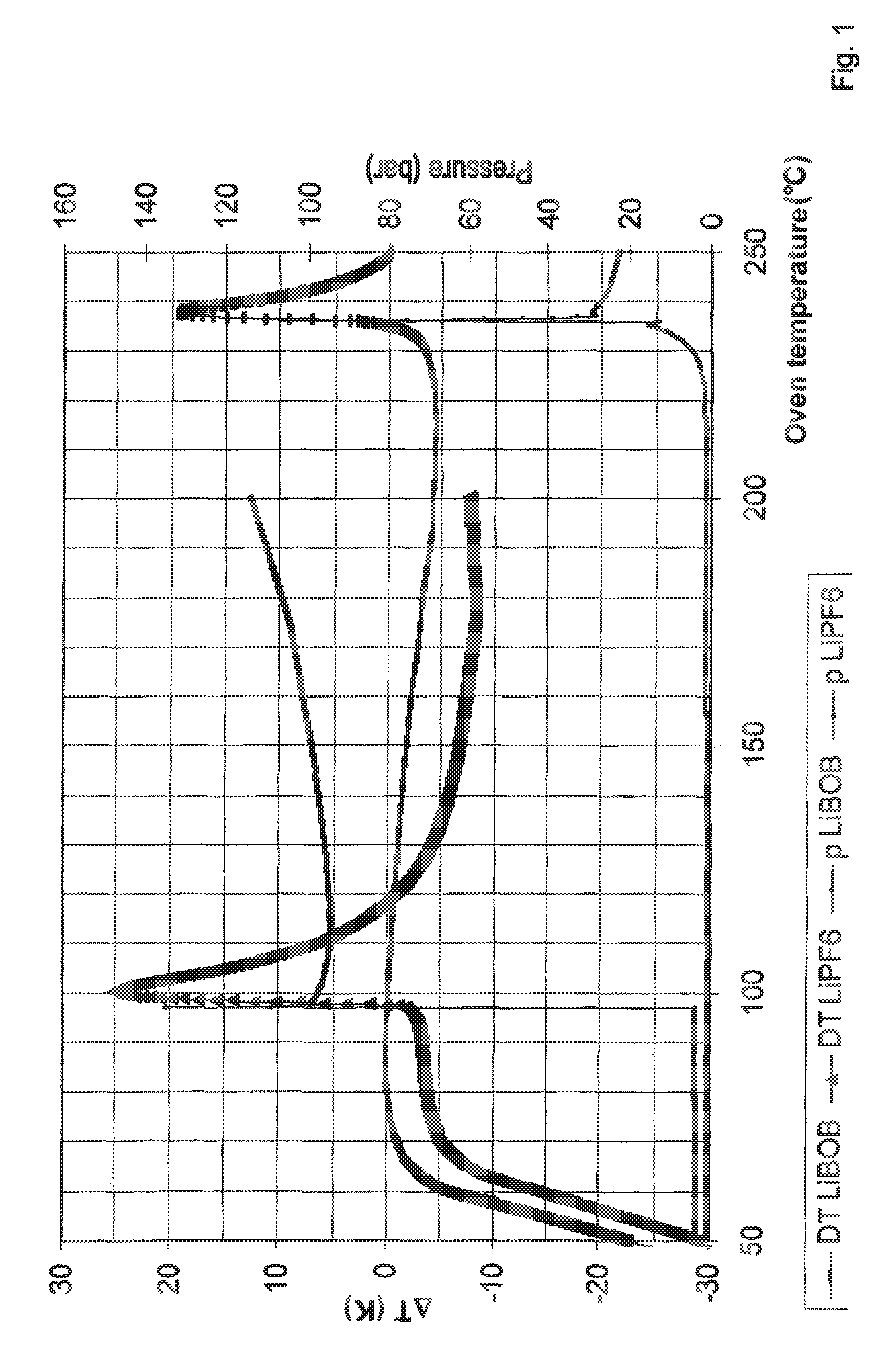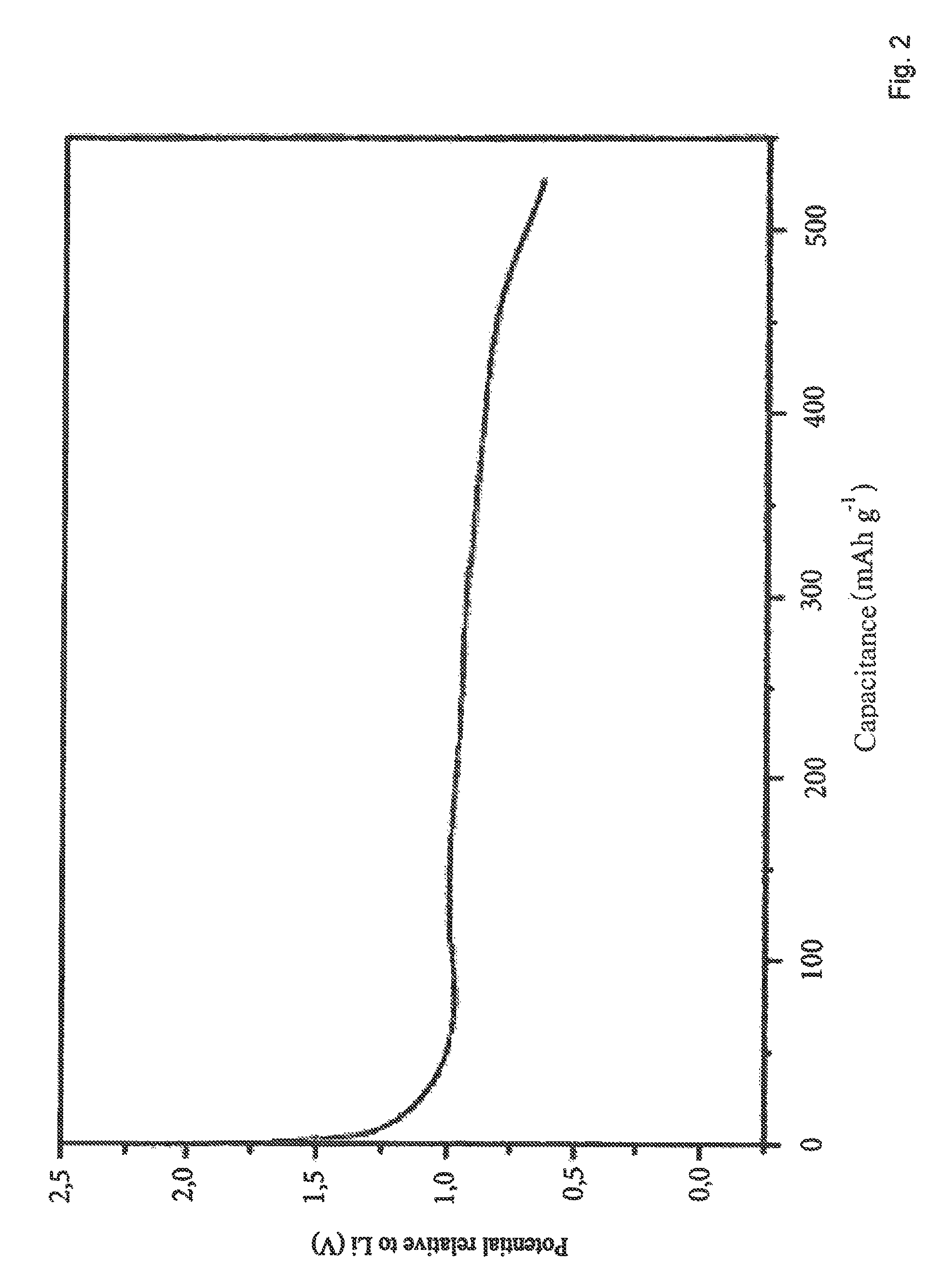Aluminum-based hydride anodes and galvanic elements containing aluminum-based hydride anodes
a technology of aluminum-based hydride anodes and galvanic elements, which is applied in the direction of non-metal conductors, cell components, conductors, etc., can solve the problems of reducing the capacitance of the electrochemical cell, the inability to use the significantly higher storage capacitance of lithium metal (3860 mah/g) in batteries, and the serious consequences
- Summary
- Abstract
- Description
- Claims
- Application Information
AI Technical Summary
Benefits of technology
Problems solved by technology
Method used
Image
Examples
example 1
Thermal Stability of a Mixture of Li3AlH6 and Various Electrolyte Solutions (DSC Tests)
[0068]An apparatus from Systag, Switzerland (Radex system) was used for differential scanning calorimetry (DSC) tests. Approximately 2 g electrolyte solvent and 0.1 g Li3AlH6 were weighed into the stainless steel sample containers, under a protective gas atmosphere. The containers were sealed tight with a lid connected to a pressure gauge. The samples were then heated at a rate of 45 K / h to 200° C. (13% solution of LiPF6 in EC / EMC (1:1)) and to 250° C. (13% LiBOB solution in EC / EMC (1:1)).
[0069]The experiment showed that the anode material Li3AlH6 according to the invention in LiPF6 electrolyte was stable to approximately 80° C. Above this temperature, the mixture decomposed with intense heat release and pressure buildup (100 bar). In contrast, the mixture containing the lithium bis(oxalato)borate (LiBOB) was stable to above 200° C.
example 2
Charging-discharging Behavior of Li3AlH6
[0070]All electrochemical experiments were conducted in an Ar-filled glove box. Three-electrode glass cells containing the Al hydride material as anode, lithium metal as cathode, and likewise lithium metal as reference electrode were produced. The anode was prepared by mixing the active material (Li3AlH6 or LiH / Al mixture) with a graphite-based conductivity additive and PTFE. The anode mixture was pressed onto a nickel mesh. A 12% solution of LiPF6 in EC / DMC was selected as electrolyte.
[0071]Lithium incorporation at a potential of approximately 1 V is apparent in FIG. 2.
[0072]FIG. 3 demonstrates that the lithium incorporation is reversible. The relatively low charge / discharge capacitance is due to the non-optimized electrode preparation (the electronic contact between the particles is not adequately ensured).
PUM
| Property | Measurement | Unit |
|---|---|---|
| molar ratio | aaaaa | aaaaa |
| particle size | aaaaa | aaaaa |
| particle size | aaaaa | aaaaa |
Abstract
Description
Claims
Application Information
 Login to View More
Login to View More - R&D
- Intellectual Property
- Life Sciences
- Materials
- Tech Scout
- Unparalleled Data Quality
- Higher Quality Content
- 60% Fewer Hallucinations
Browse by: Latest US Patents, China's latest patents, Technical Efficacy Thesaurus, Application Domain, Technology Topic, Popular Technical Reports.
© 2025 PatSnap. All rights reserved.Legal|Privacy policy|Modern Slavery Act Transparency Statement|Sitemap|About US| Contact US: help@patsnap.com



